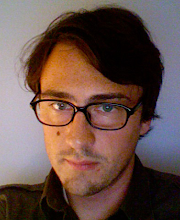Once I got to the center, and a good map, I was alright. I enjoyed the morning just walking around and familiarizing myself with the streets and landmarks. In typical European fashion the streets don't even pretend to make sense. Makes one thankful for the good 'ole grid of Chicago. Instead of head north, south etc., directions are often something like these directions to a park for me to run in (mind you this is being interpreted to me): "Head down to the big street, then go past the store, then there's a street, then another street, perhaps another, then you turn down one of them or something. That's where the park is! ...sigh. Speaking of running. I've found, as many others have I'm sure, that running is a great way to explore new areas. Unfortunately I'm really out of shape. By the time I'm able to explore out of the quarter-mile radius or so, I'll know these half a dozen blocks really well.
Back to the city center. Much of the day was spent going in and out of churches built at various points in history. Two really stuck out. The first was the Church of St. George. The oldest building in Sofia, dating back to the 4th century. I stumbled upon this church by accident trying to take a shortcut. Legend has it that Constantine himself visited here. The second was Hagia Sophia church, the second oldest church in Sofia. This church is in the shadow of the much more grand Nevsky cathedral, and has a much more rich and intimate feel to it. It has gone through several buildings and conquerors and thus has excavations taking place in several spots inside. Mass was beginning when I came in and the liturgy was sung by an absolutely breathtaking choir. Made me wish I knew old Slavonic.
Now, if I can hold on to that when a vendor tries to rip me off...
On the lighter side. There are these little elevated huts that are perched next to many traffic intersections. A traffic officer would stay in these and operate the lights before they were on automatic switches.
I've been told that occasionally officers would mess with motorist by stopping them even when there was no traffic late at night. I suppose with a job like that, you would need a sense of humor.
My afternoon adventures included a stop at the local post office and the archeology museum. I was going by the post to try and mail a post card to my youngest brother. After going in the wrong department, twice, I managed to get in broken English, that I needed to go to the "small shop" in the Foyer. Small shop being one of the three Kiosks festooned with, uh, postcards. After attempting to underpay for the stamp, since I don't know the Bulgarian number words, I had to pick which of a dozen boxes to drop it in, all of them of course marked in Cyrillic. After another broken conversation, I determined that it was the little yellow box all the way at the other end of the hall was where it needed to go. I was glad to have escaped without triggering an international incident.
The Museum of Archeology was next on the list. The artifacts were extraordinarily accessible, as much of them were set in the main hall. Strangely though, it seemed as if much of it was strewn about hap-haphazardly. It was difficult to get a sense of the history or the context of the artifacts as it was more like a collection of stuff than an exhibition. I was tempted to make the "low budget version of western Europe" comparison that I did before, but you certainly wouldn't gather that from the website. More strikingly though, was the building itself and the way that it had been transformed. The museum is housed in the former Buyuk Mosque, a far grander building than the one active mosque still left in the city and itself, an article of antiquity. All the interior had been white washed. When you looked up at the dome you could see where the white had peeled away, that there were colorful Islamic frescoes that had simply been painted over. It was a stark reminder of the collective distaste for all things Ottoman, and by association, Turkish and Muslim.




No comments:
Post a Comment